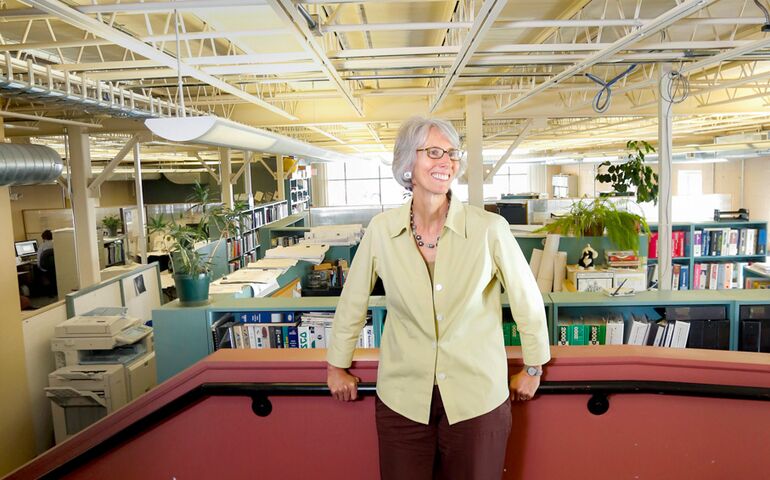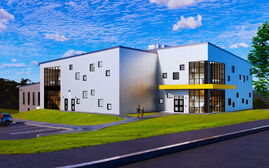20 on '20: Architects and engineers look to embrace new technology
 Photo / Tim Greenway
Ellen Belknap, principal and president of SMRT, in Portland.
Photo / Tim Greenway
Ellen Belknap, principal and president of SMRT, in Portland.
Given the impact of climate change, the design of buildings that reduce the carbon footprint will be a major priority for architecture firms, says Ellen Belknap, president of SMRT, Maine’s largest architecture firm.
“It’s an exciting time for the building industry,” she says. “Maine is in a strong position to lead the way in terms of new technologies and policies that support sustainability.”
Specifically, “Real innovation is happening in the architecture/engineering industry in the movement to reduce the greenhouse gas emissions in buildings and infrastructure.”
Much of the carbon reduction focus has been on making building operations more efficient, but that’s shifting to also include carbon emissions associated with building construction. “That includes extracting, transporting, manufacturing and disposal and recycling of materials,” she says.
Innovation that reduces building carbon footprints will continue to grow. One important move is the use of mass timber, specifically cross laminated timber, which has much lower carbon in both production and construction processes than steel and concrete.
The announcement this fall that LignaTerra Global will locate a construction plant in Lincoln, and the town’s creation of the Maine Forest Products Innovation Park, is exciting news for the architecture/engineering industry, Belknap says.
“The coupling of carbon reduction and jobs creation in Maine is a huge opportunity for the state to be industry leaders and for the architecture/engineering industry in the state to take full advantage of these products.”
The planned student center and residence hall at the University of Southern Maine, which SMRT is designing, is also “a great example of innovation in our industry relative to sustainability.” Plans include passive house and LEED silver standards, as well as use of mass timber.
Trends toward sustainability are becoming more mainstream, particularly off-site construction techniques and prefabrication of building components, she says. “What drives this movement is optimizing labor, quality, safety, schedule and cost … We anticipate more and more building components will arrive at construction sites pre-assembled.”
Ultimately, the focus on developing sustainable technologies will help the state’s economy, Belknap says. “I’m excited by Maine’s opportunity to be industry leaders in developing floating offshore wind farms, manufacturing mass timber products, electrification of transportation and building heating and cooling systems and replacement of building materials with high embodied carbon,” she says. “The largest impact we can make in the effort to reduce greenhouse gas emissions is in the electrification of everything and the shift to renewable/green energy.”













0 Comments